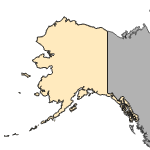Mysis diluviana
(opossum shrimp)
Crustaceans-Mysids
Native Transplant |
|
Common name: opossum shrimp
Synonyms and Other Names: Mysis relicta
Identification: Superficially, Mysis diluviana resembles a crayfish. Differences include a thin carapace not completely covering the thorax, with the last two segments exposed dorsally, and to a lesser degree laterally. Appendages are long, thin, setose, biramous, and many segmented. The first thoracic segment is fused with the head and bears a pair of maxillipeds. The remaining seven segments are distinct with the secondary maxillipeds on the second thoracic segment and a pair of swimming legs on each of the remaining five segments. Eyes are extremely large, compound, and stalked. The telson has a wide, bifurcated tip. In mature males the exopod of the third and fourth pleopods is six segmented and the exopod of the third pleopod is well developed (Pennak 1989).
Size: maximum length 20 mm (Morgan and Beeton, 1978).
Native Range: Found in deep, cold oligotrophic lakes; also has been reported from brackish and estuarine waters. This species is circumpolar and occurs in the United States, Canada, the United Kingdom, northern Germany, northern Russia, and the Scandinavian countries (Pennak, 1989). In the U.S. and Canada it is native to the Great Lakes; Green Lake, Trout Lake, and Lake Geneva in Wisconsin; the Finger Lakes in New York; Waterton Lake, Alberta; a few lakes in the northern states; and many deep lakes in Canada (Pennak 1989).



|

Alaska |

Hawaii |

Puerto Rico &
Virgin Islands |

Guam Saipan |
Hydrologic Unit Codes (HUCs) Explained
Interactive maps: Point Distribution Maps
Nonindigenous Occurrences:
The first nonindigenous introduction was proposed by Clements et al. (1939) for the lakes of the Okanagan basin, British Columbia, to enhance the forage base for the previously introduced lake whitefish (Coregonus clupeaformis). In 1949 Kootenay Lake, British Columbia, was the first lake to be stocked with M. diluviana (Sparrow 1964). Subsequent stockings were performed in 5 Montana lakes upstream of Flathead Lake (Bosworth 2011), and in many other lakes of the western U.S. and Canada (Spencer et al., 1999). A single specimen was collected and identified from Lake Demopolis, Alabama in 2004 (J. O'Keefe, pers. comm., unpublished data). However, there are two native opossum shrimp in the South, Taphromysis bowmani and T. Louisianae.
Table 1. States with nonindigenous occurrences, the earliest and latest observations in each state, and the tally and names of HUCs with observations†. Names and dates are hyperlinked to their relevant specimen records. The list of references for all nonindigenous occurrences of Mysis diluviana are found here.
Table last updated 4/25/2024
† Populations may not be currently present.
Ecology: They live for just two years. Breeding takes place in the winter and adults carry young in a brood pouch until fully developed in the spring. They become sexually mature at 12-14 mm. Mysis diluviana stays at the bottom of the water column during the day and migrates toward the surface during the night to feed on zooplankton.
Means of Introduction: Intentionally stocked to provide additional forage for sport fish (Clemens 1939, Bosworth 2011).
Status: Established in its non-native range in northern regions. However, no additional specimens have been reported from Alabama.
Impact of Introduction: Mysis diluviana is an opportunistic feeder with both predatory and filter feeding habits. When zooplankton are abundant they serve as the primary food source; when scarce M. diluviana will feed on suspended organic detritus or from the surface of benthic organic deposits (Pennak 1989). Within its native range it has been shown to be an important prey item for freshwater fishes (Nesler and Bergersen 1991). However, when introduced into what was considered to be an "empty" niche, its impact on the aquatic community was significant. Dramatic changes and species extinctions of native zooplankton communities have been attributed to this opportunistic lifestyle. This change in the primary consumer composition has lead to drastic ecosystem changes in Flathead Lake, Montana (Spencer et al. 1999). These smaller shrimp replaced larger native species but were unable to keep up with the growth of algae in the lake. The benthic tendencies of this species provided a massive new food source for bottom dwelling lake trout, allowing the trout to increase their population and overtake kokanee as the top predator in Flathead Lake (Bosworth 2011). Declines in the number and size of game fish have been documented since the introduction of M. diluviana , provoking doubt regarding their utility as a forage base for game fishes.
References: (click for full references)
Bosworth, B. 2011. How non-native shrimp transformed the ecosystem at Montana's Flathead Lake. New West Travel and Outdoors. http://www.newwest.net/topic/article/how_non_native_shrimp_transformed_the_ecosystem_at_montanas_flathead_lake/C41/L41/
Clemens, W.A., D.S. Rawson, and J.L. McHugh. 1939. A biological survey of Okanagan Lake, British Columbia. Fisheries Research Board of Canada Bulletin 56. 70 pp.
Morgan, M.D. and A.M. Beeton. 1978. Life history and abundance of Mysis relicta in Lake Michigan. Journal of the Fisheries Research Board of Canada 35(9):1165-1171.
Nesler, T.P. and E.P. Bergersen. 1991. Mysids and their impacts on fisheries: an introduction to the 1988 Mysid-Fisheries symposium. Pages 1-4 In: T.P. Nesler and E.P. Bergersen, editors. Mysids in fisheries: hard lessons from headlong introductions. American Fisheries Society Symposium 9, Bethesda, Maryland.
Pennak, R.W. 1989. Fresh-water invertebrates of the United States, protozoa to mollusca. John Wiley & Sons, New York, 3rd ed.
Sparrow, R.A.H., P.A. Larkin, and R.A. Rutherglen. 1964. Successful introduction of Mysis relicta Lovén into Kootenay Lake, British Columbia. Journal of the Fisheries Research Board of Canada 21:1325-1327.
Spencer, C.N., D.S. Potter, R.T. Bukantis, and J.A. Stanford. 1999. Impact of predation by Mysis relicta on zooplankton in Flathead Lake, Montana, USA. Journal of Plankton Research 21(1):51-64. http://plankt.oxfordjournals.org/content/21/1/51.full.pdf
Author:
Foster, A.M., A.J. Benson, and M. Cannister
Revision Date: 5/2/2018
Citation Information:
Foster, A.M., A.J. Benson, and M. Cannister, 2024, Mysis diluviana Loven, 1862: U.S. Geological Survey, Nonindigenous Aquatic Species Database, Gainesville, FL, https://nas.er.usgs.gov/queries/factsheet.aspx?SpeciesID=1142, Revision Date: 5/2/2018, Access Date: 4/25/2024
This information is preliminary or provisional and is subject to revision. It is being provided to meet the need for timely best science. The information has not received final approval by the U.S. Geological Survey (USGS) and is provided on the condition that neither the USGS nor the U.S. Government shall be held liable for any damages resulting from the authorized or unauthorized use of the information.